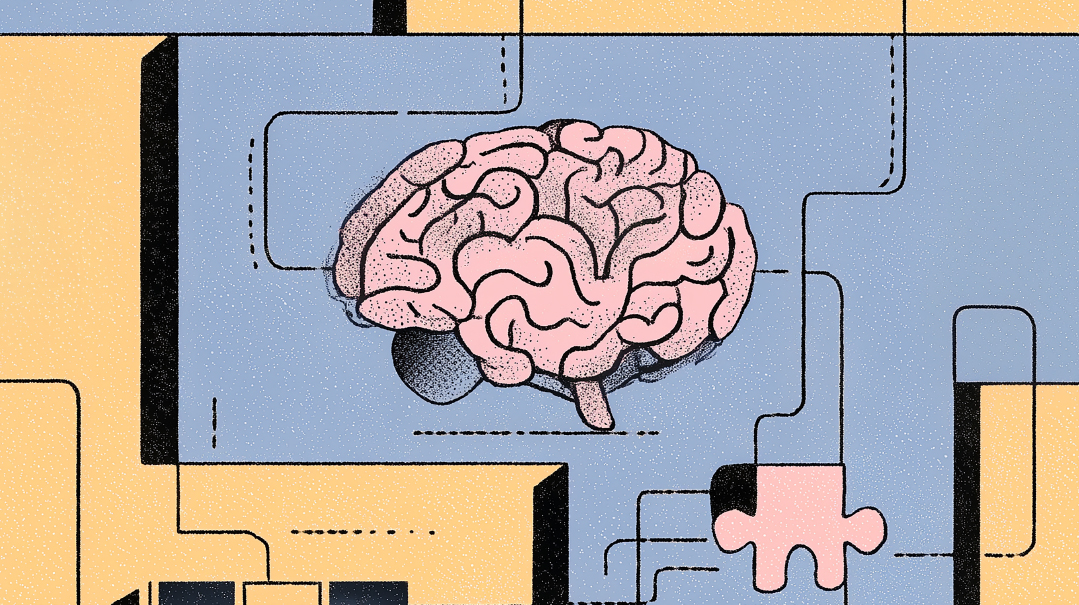Escaping the Prison of Silence


Many autistic children are trapped within themselves, unable to communicate with the outside world, Family First explores the various therapies that help numerous children learn to open up and reveal their special personalities
Known as a “complex developmental disability” autism can impact a wide variety of physical emotional and social skills. Affecting roughly one in 100 children — and appearing four times as often in boys — autism is a fast growing disability with almost two million cases in the US today. A new case is diagnosed every twenty minutes.
Autism or more correctly ASD (Autism Spectrum Disorder) is believed to be the result of a neurological disorder that affects the brain’s function and is usually detected during the first three years of life. It’s a “wide-spectrum disorder ” meaning that every person has a different combination of symptoms symptoms that vary from mild to severe. Physical symptoms often include an aversion to physical contact or fear of sudden noises lights or smells etc. Repetitive behaviors and obsessions are also common.
Many autistic children shy away from contact with others whether physical or social. For many parents that means that their child won’t look them in the eye and often won’t even let them hug him. For autistic children who don’t speak the lack of a relationship is even more painful — they feel that they can’t reach out to their parents and their parents can’t connect to them.
In most cases apart from the most severe autistic children don’t have any physical disability that prevents them from speaking or communicating nonverbally — the problem is in the brain. And it has been shown that with the right therapy many autistic children can be helped to open up to bridge the gap with the world around them and become an active — and happy — part of it.
Finding the right therapy for the child is not easy -- every autistic child has a different collection of symptoms. And so each child needs a different individualized treatment designed especially for them. But when the right treatment is found the results can be amazing. As Etti* the mother of five-year-old Noam who is autistic told Family First “My son is a double present from Shamayim — I got a present when he was born and now that I can communicate with him I got a whole new gift!”
Family First takes a look at just a few of the most popular treatments, and shares some of their heartwarming success stories.
Reinforcing Communication
Probably the best-known therapeutic treatment for autism is ABA (Applied Behavior Analysis). ABA is based on principles of behavioral psychology — essentially using positive reinforcement to change a person’s behavior. For example, rewarding an autistic child with a candy every time he speaks a full sentence will help him more quickly learn to keep on speaking.
ABA therapy has helped many autistic children to open up and communicate, and is the main therapeutic model used at Shema Kolainu — Hear Our Voices (SKHOV) and Tishma, the two centers founded by Joshua Weinstein, in New York and Jerusalem respectively. Mr. Weinstein has many years of experience in the field of autistic treatment, and in 2000 founded the International Center for Autism Research and Education. Why ABA? “Because it’s the only therapy program backed up by research,” Mr. Weinstein explains. “That doesn’t mean all other therapies are bad, but ABA is the only one based on solid evidence.”
Families whose children have been treated at Shema Kolainu testify to ABA’s success. Here are just a few of their stories:
“I often wondered if Michael would ever speak. Ten months have passed since he started at Shema Kolainu, and now his voice is music to our ears.... His tantrums have decreased and his language keeps on increasing.… Michael has a long road ahead of him, but he has begun walking down that road, and we are very proud of him. He has brought us lots of smiles and lots of laughter, and has shown us what he can do — which is a lot more than he could do ten months ago. There is a light in his eyes and a hope in our hearts.” (Grandmother of an autistic child at Shema Kolainu)
“Shloimy didn’t know me or anyone in the family,” his mother recalls. “He avoided familiar people and shunned new people who came into his environment. Mealtimes were a nightmare — besides the fact that he wouldn’t sit at the table with the family, he wouldn’t try new foods and often simply refused to eat.” Shloimy would throw a tantrum at the slightest change to his routine. Today, after treatment at Shema Kolainu, Shloimy has “learned how to learn” and can now accept both strangers and changes to his routine calmly, without tantrums.
Autistic children vary widely, not only in their symptoms, but also in their intellectual abilities. “Kids with autism are the same as kids without autism,” Joshua Weinstein emphasizes. “Some are bright and some not so bright.” And so what one autistic child can achieve may not be possible for another, but ABA therapy can help autistic children on all levels to succeed and feel good about themselves.
Getting Down to Their Level
Less well-known is the therapy known as D.I.R. (Developmental, Individual Difference, Relationship-based)/ Floortime. Developed by Dr. Stanley Greenspan, author of the bestselling book Engaging Autism, and Dr. Serena Wilder of California — both Jews — D.I.R./Floortime is described as “a comprehensive, interdisciplinary approach that focuses on the emotional development of the child.” It does so by sitting with a child at eye level, entering his world, and teaching him to communicate there.
Does it work? It’s efficacy is still not proven, and research into Floortime is ongoing, but Dr. Greenspan reported, “We have been able to help all children. In one group, we helped to such a degree that they became fully verbal, very bright, creative, and empathetic. They did better than our wildest expectations.”
One place that uses the D.I.R. therapy model is Sulam, the well-known Israeli organization dealing with special-needs children. Their communication program for autistic children was started with the aim of “opening the world of children with autism to normal communication …”
Mrs. Brachi Levi, the principal of Sulam’s communication kindergartens in Beit Shemesh, explains how Floortime works in practice. “The idea is we sit with the child at their eye level. The goal is to help them finish whatever it is they are doing, whether it’s playing with a ball or building with blocks, and not to lose their concentration.” D.I.R. /Floortime helps to guide the child through a number of stages of emotional development, such as the ability to connect with those close to him, each stage building on the previous stage. And although D.I.R./Floortime may not have the strong body of research behind it that ABA does, the high rate of success that Sulam has in treating autistic children certainly seems to suggest that it works.
At first Etti thought her son Noam’s unusual silence was because he was sick. But when she was asked to take him out of kindergarten because he wasn’t speaking a word and was hiding in closed places, she realized he had a big problem. Once he was diagnosed, “All life became a challenge — I didn’t know where to start.” After reading Dr. Greenspan’s book, she was directed to Sulam where Noam began treatment. At that stage, Etti recalls, “Noam barely had any interaction with the world — even playing peek-a-boo with him was hard work. Today,” Etti says with joy in her voice, “Noam is a new child; he speaks fluently, makes eye contact, and seeks out social contact. Before, he would hide under my skirt — now he’ll go and hug a kid he doesn’t know.”
Hugging is something that many autistic children have a big problem with — in fact, any form of expressing emotions is an issue. “These children have a big problem showing their emotions and judging others’ emotions,” explained Mrs. Levi. “So we have to show them we’re with them, on their level — and we have lots of tricks.”
One “trick” is known as “follow the child.” This basically means that the child leads and the therapist follows; whatever he does, whether it’s tossing a ball or cuddling a teddy, the therapist lets the child guide the session. What’s the purpose? “He gets attention, and we show him that everything he does is important. It gives him lots of self-confidence,” says Mrs. Levi.
Yehudah* was functioning on a very low level; at his first meeting with the Sulam therapists, all he did was spit on his mother. His mother badly wanted him to join the group — she had a dream that he would go to cheder like other boys. We tried to tell her it wouldn’t work, but she wouldn’t listen. So we tried. Now, two years later, he’s not in cheder yet, but he’s improved so much that he managed to go up to his mother and say to her, “Ima, I know you’re disappointed and I’m sorry.” That’s a big, big step from spitting on her.
Ultimately, the aim of the treatment is to teach the child to communicate with the outside world effectively, both with the immediate family and with others, and the relief and joy for both parent and child when that happens is enormous. As Mrs. Levi said, “Parents feel like their autistic child is part of the family, and the children feel that they’re part of the world.”
From Pictures to Words
A picture is worth a thousand words, goes the saying. How much more so for a child who doesn’t speak. PECS (Picture Exchange Communication System) is a system that teaches children to communicate using a series of pictures.
At first, the pictures are of favorite items — often foods — and the child is rewarded with the food when they learn to give the picture card to the “communication partner.” In later stages, the child has to choose from a variety of pictures, and as he becomes more familiar with the idea, he learns to form whole sentences using the pictures, together with “phrase cards” that include phrases such as “I want” and “I see” printed on them. PECS is so popular with both therapists and parents because in many cases it has led the child to develop natural speech.
Carla is a five-year-old who presented with echoic sounds, repeating what she had heard and never speaking spontaneously. She was taught to use PECS and offer the sentence strip phrase “I want” plus a picture of a reinforcer. The teacher would provide a vocal model of “I want” after Carla would hand her the sentence strip. From exchanging pictures, Carla eventually discovered that she could say the words, and now uses natural, spontaneous speech.
PECS is widely used in many therapy settings, both on its own and in conjunction with other therapies, including D.I.R. and ABA. As Joshua Weinstein explains, “The most frustrating thing for kids is not being able to express themselves. We’re not rigid — if something works, we’ll use it.”
But the question is, does it work? Those who use PECS claim it helps the child to move on to normal speech, while detractors claim the opposite, that the child becomes dependent on PECS and so is held back from developing normal speech. Studies are contradictory; in one study of eighteen preschool children, almost half of the children stopped using PECS and started using natural speech within a year. In fact, one parent commented, “PECS turned on the light of communication for my child.” Other studies, however, showed that while the children became proficient in the use of PECS, they didn’t develop natural speech any more than other children not using PECS.
Those who use PECS are convinced it works wonders. “It definitely helps the kids to develop natural speech,” says Joshua Weinstein. “And even for kids who can’t speak, there is a version of PECS that has buttons they can press, which speak for them.”
Ronnie is six years old and has problems listening and responding. He was isolated, never initiating interaction or displayed emotion. Ronnie was also mute. In therapy he was given an alternative means of communicating called an Assistive and Augmentative Communications device (AAC). This is a small, hand-led computer that helps children supplement oral communication …Using the AAC, Ronnie can now answer questions, interact socially with his peers, and even approach his teacher for hugs. From a life of isolation and mutism, he is now entirely a part of the world around him. (Shema Kolainu)
Whether it’s pictures, words, or a combination, the main focus is getting children to communicate, and if PECS can achieve that, then it’s certainly at least somewhat successful.
Camera Communication
If PECS is successful with static pictures, what would happen if the picture moves and talks as well? Well, that’s just what the children in Aleh’s four residential homes use to help them communicate. Aleh is an Israeli organization that treats children with autism and all kinds of brain damage in four centers in Bnei Brak, Jerusalem, Gedera, and the Negev. As Aleh deals with children with a very wide range of problems, the treatments, too, vary widely from child to child.
For those who suffer from a lack of communication skills, especially autistic children, Aleh has developed a new program using Skype, the popular Internet-based free video calling program. Mrs. Yael Shiblovsky explains how it works: “Our kids live here, so the parents rarely see them, and the parents really bless us for this project. It’s amazing — you take a kid who can’t even say his name and put him in front of the screen, and he starts to communicate.”
For children who can’t speak at all, Aleh has programmed a series of switches with prerecorded messages such as “Hi Mommy, how are you?” “I love you!” etc., and the children can simply press the right buttons to say what they want. And the children love it, says Mrs. Shiblovksy. “You should see them — they might be sitting there silently, but as soon as it’s time for Skype, they wake right up and get so excited.”
Aleh’s program also includes making PowerPoint presentations for each child using family photos, coupled with stories about the members of their family. All these programs, Mrs. Shiblovsky explains, help the children to express their own feelings and to identify those of others.
These children might not be able to speak, but they certainly manage to communicate their feelings in their own special way.
Love Therapy
As we can see, there are all kinds of therapies that can be wonderfully effective in helping autistic children. But all the experts — and the parents too — agree that no therapy would work without one vital ingredient — love. As Joshua Weinstein puts it, “Way before ABA, one of the experts in the field of autism therapy said that one of the most effective things in helping a child advance is a four-letter word called ‘love.’$$separatequotes$$” At Sulam, Mrs. Levi explains, “Everything we do is done with lots of warmth and love, and everything the children do is received with excitement.”
All children blossom and open up when they are given love, but autistic children, who have so much to give, yet are trapped within themselves, are that much more thirsty for an abundance of love. As Malka,* mother of a six-year-old autistic girl, put it, “They just want to love, and are searching for someone to love.”
What greater gift could there be than enabling a child trapped in his own world to open up, and give and receive love?
* Name has been changed
Popular Autism Therapies
- applied behavior analysis (ABA)
- casein-free diet
- essential fatty acids (EFA)
- gluten-free diet
- picture exchange communication system (PECS)
- sensory integration
- social stories
- speech and language
- visual schedules
- vitamin A
- vitamin B6 and magnesium
- vitamin C
“Wonder Kids?”
Many people think autistic people are all geniuses, and indeed there does seem to be a high percentage of autistic people with amazing talents. An estimated 10 percent of the autistic population — as compared to just 1 percent in the general population — are “savant,” possessing extraordinary mental ability.
Autistic geniuses have shown all kinds of amazing talents. The American Leslie Lemke played Tchaikovsky’s Piano Concerto No. 1 perfectly after hearing it just once, and never having had a piano lesson. Stephen Wiltshire, from England, drew an accurate map of London from memory after a single helicopter trip over the city, while Daniel Tammet, also from England, can’t drive or tell left from right but can remember pi to 22,514 decimal places. Kim Peek, who was the model for the bestselling film on autism Rain Man, can read two pages simultaneously — one with each eye. His hobby is memorizing phone directories.
But bottom line, we should remember that not all people with autism have an incredible mental gift nor are all savants. Most people with autism are just ordinary people — with autism.
“From the Mouths of Children…”
Prophets — or fakes? In recent years a number of autistic children, predominantly in Israel, have become famous due to their “predictions.” Using “facilitated communication” — a board on which the child’s hand is guided to letters to form words, these children, who cannot speak, have seemingly given out prophetic messages regarding Israel, teshuvah, and the coming of the Mashiach. The messages are stunning, but opinions are mixed as to their authenticity. The Talmud (Bava Basra 12b) states that “Since the Temple was destroyed, prophecy has been taken from prophets and given to fools and children,” and indeed, the bestselling book Galia, containing the many “prophecies” of an Israeli autistic girl, is recommended by Rabbi Uri Zohar, who says that it “gives him yiras Shamayim.” But others denounce such “prophecies,” claiming that it amounts to divination, which is forbidden by the Torah (Devarim 18:10-12).
Experts in the field of autism are skeptical of such methods. Although some states in the US accept evidence from autistic children using communication boards and some parents have reported amazing results, the problem is that it is not the child himself who places his hand on the letters, but his guide. And if that is the case, as Joshua Weinstein of Shema Kolainu put it, “Who’s giving the answers here?”
(Originally featured in Family First, Issue 209)
Oops! We could not locate your form.












